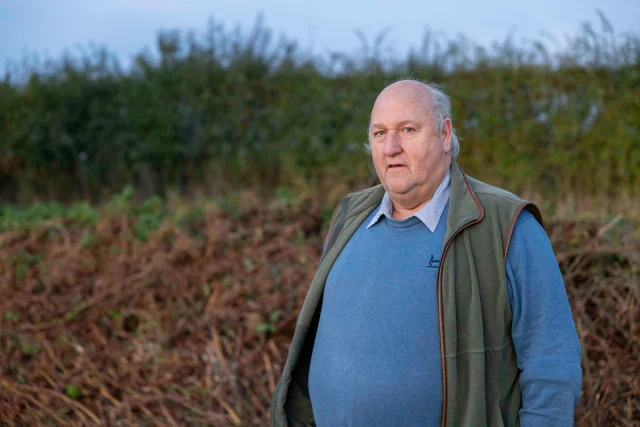Published on 1st March 2023
Disease Management
Disease pressure intensifying, but not out of control

Tom Astill, Bayer commercial technical manager for the East Midlands, gives a few pointers on what to look for in this season’s oilseed rape crops
Disease pressure intensifying, but not out of control Content
It’s been a difficult season for many oilseed rape crops. Some have established well; some have succumbed to a combination of the hard frosts seen over the winter and pest damage in the form of cabbage stem flea beetle (CSFB) or winter stem weevil.
Disease too has been highly prevalent. Of the more than 300 samples submitted to the Bayer SpotCheck initiative between October 2022 and February 2023, 40% have tested positive for light leaf spot.
The incidence of disease continues to increase. Of the samples submitted for testing in February, 95% were positive for light leaf spot with an average infection of 48%. In contrast, 53% were positive for phoma stem canker with an average infection level of 7%. That the incidence of light leaf spot infection is so high is perhaps to be expected given the polycyclic nature of the disease.
It also serves to highlight the wide temperature range that supports the disease. The optimum temperature for development may be 15°C, but it’s clear that the cold weather seen in December and January did little to slow its spread. Light leaf spot symptoms are being observed in fields now.
Where crops have endured frost damage, don’t be too concerned. Crops on the continent endure such conditions in most seasons and still do fine. As long as the growing point is still there the crop will recover while the loss of a few leaves, especially where they are harbouring disease, is of little concern. Nor should low plant counts be too concerning. While a cause of frustration, especially where pigeons are a nuisance, just 10-15 plants per square metre can deliver a respectable yield.
Damage caused by CSFB and winter stem weevils, however, is more concerning. It will be for growers and advisers to consider the severity of the damage before deciding on the best course of action. Unfortunately, there are few choices when the crop is heavily damaged. It may come down to what’s the least expensive alternative, but it will depend on the situation.
Where the chosen course of action is to replace the crop, remember to consider what herbicides were applied in the autumn. The principal concern here is propyzamide but other long-acting residuals with activity against cereal plants should be considered.
Most crops will have already received the first nitrogen and sulphur application. As we move through March growers will be contemplating the final applications, but with crops at varying stages of development this is likely to be a protracted affair.
The amount of nitrogen to be applied will be based on a range of factors, not least the green area index (GAI) and soil nitrogen supply. The role of micronutrients in enabling efficient nitrogen utilisation should not be overlooked. Our appreciation for magnesium, manganese, boron and molybdenum especially, continues to increase as our understanding of the role these play in supporting crop health and development improves.
Within a few weeks crops will have moved on rapidly. At this point, thoughts will turn to canopy management and minimising the risk of disease and lodging. The need for a plant growth regulator will come down to a range of factors including the variety being grown, plant density and sowing date among others, but where crops are seen to be struggling anything offering PGR activity should be avoided.
Disease protection is still important though, to maintain yield potential. Prothioconazole-containing products such as Proline 275 would be a preferred product as it is one of the strongest fungicides for use against late leaf spot. Timing is important: aim to apply as soon as conditions allow, as light leaf spot fungicides work best applied preventatively before disease is established.



